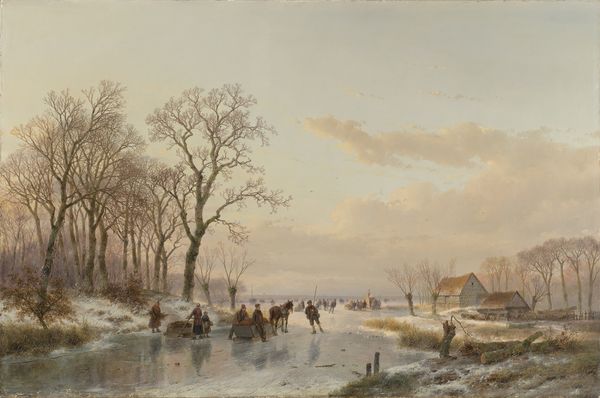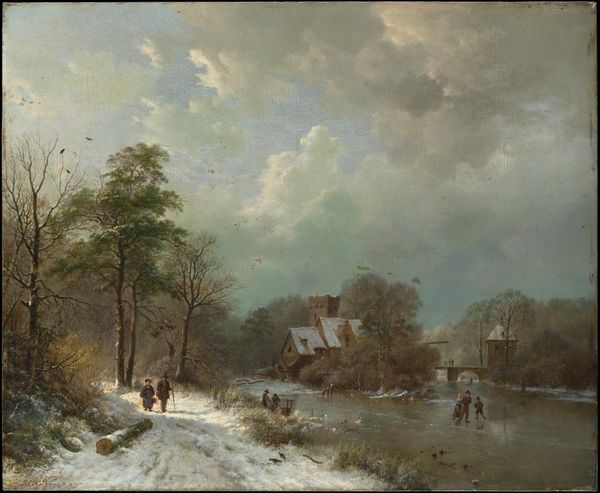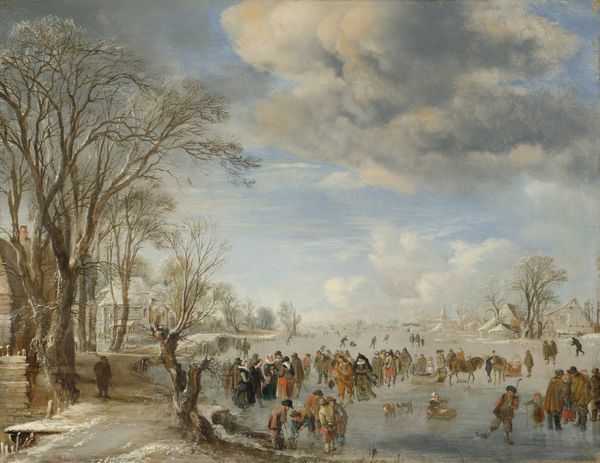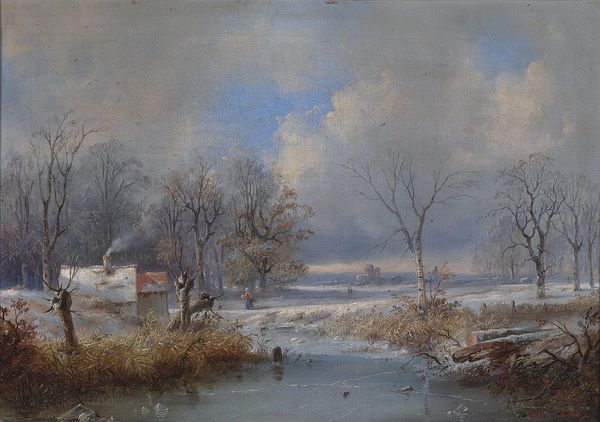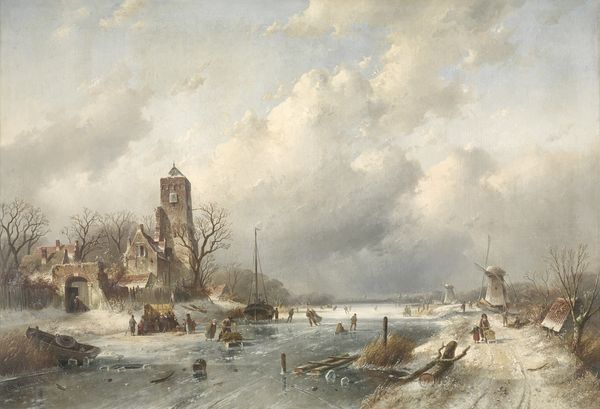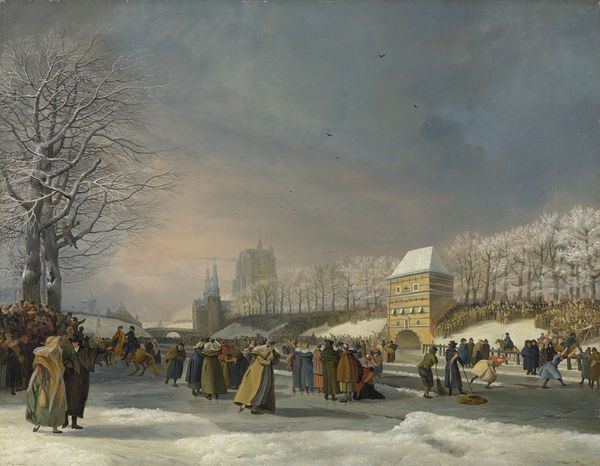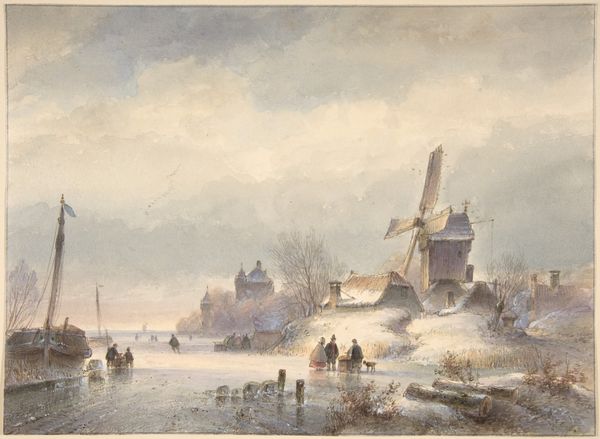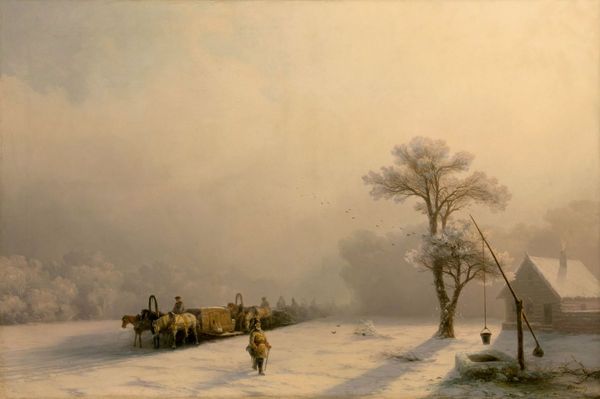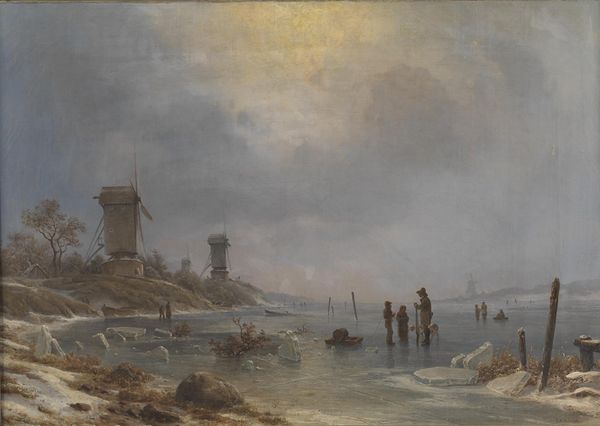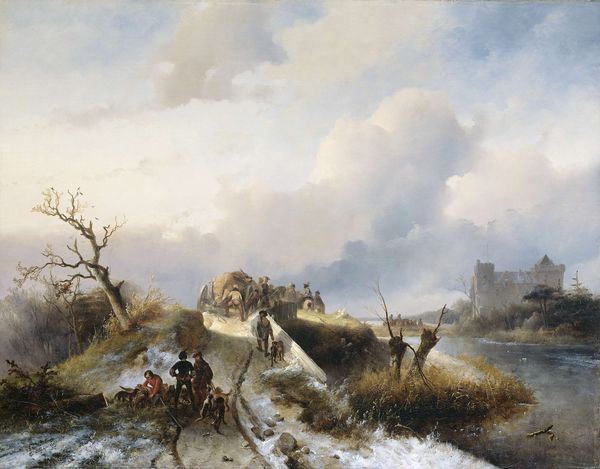
#
abandoned
#
vehicle
#
charcoal drawing
#
possibly oil pastel
#
charcoal art
#
oil painting
#
derelict
#
underpainting
#
painting painterly
#
charcoal
#
watercolor
Copyright: Public domain
Curator: Andreas Achenbach painted "Winter Boat Dock" in 1838. The cool palette and the almost monochrome depiction create a definite mood. What's your initial take? Editor: Immediately, I'm struck by the palpable sense of desolation. The greyscale dominates the entire composition. Curator: The atmospheric perspective really compresses the depth, doesn’t it? Notice how Achenbach employs painterly strokes in the sky, juxtaposed with the finer details in the foreground figures. How does that compositional choice strike you, from a historical perspective? Editor: It illustrates an era of transition. We see Romantic ideals waning and nascent Realist impulses emerging. The depiction of ordinary people, even struggling within their environment, indicates a shift towards documenting quotidian realities rather than idealizing nature. Consider also, the social implications of waterway transport and seasonal disruption. Curator: Precisely. But observe also how the artist organizes this tableau. The boat acts almost as a focal point— bisecting the lower third horizontally, thereby creating balance. Do you see a kind of geometric rigidity underlying the ostensible naturalism? Editor: The "naturalism," I argue, reflects evolving sensibilities in 19th century Europe. Audiences in rapidly industrializing societies, witnessing social transformations, sought resonance through familiar experiences. It’s more than surface appearance, it echoes socio-political awareness. Curator: Interesting interpretation! Though my eyes tend to linger on Achenbach's sophisticated rendering of the diffused winter light. The painting demonstrates masterful understanding of color and texture to mimic optical phenomena. Editor: True, and one wonders how art institutions and the academy played roles in legitimizing a painting showing this kind of commonplace scene rather than grand history paintings that used to hold favor. Curator: These layers of historical understanding greatly enriches our reception of visual aesthetics. Thank you. Editor: A valuable exchange as we reconsider artworks within expanding networks of socio-cultural change.
Comments
No comments
Be the first to comment and join the conversation on the ultimate creative platform.

